MG Comes to Abingdon Part 2
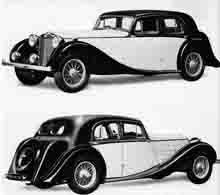
 As the 1930s progressed the MG Car Company was slowly but surely moving away from the parent company. They were of course still sourcing their engines from Wolseley and radiators from the Morris Radiator factory, but very little else in the way of components was shared with the Morris concern.
As the 1930s progressed the MG Car Company was slowly but surely moving away from the parent company. They were of course still sourcing their engines from Wolseley and radiators from the Morris Radiator factory, but very little else in the way of components was shared with the Morris concern.
Now, as they were coming to the end of 1934, Kimber was busy drawing up plans for his company’s future. These included moving away from the smaller saloons and coupes with which he’d had limited success, in favour of building a large six cylinder sporting saloon in the mould of the 18/80s of yesteryear. It would naturally be a vehicle much more in the modern idiom and also a great deal more sophisticated. Once again he turned to Bentley for inspiration and so decided that he too would need an engine of 3.5 litre capacity in order to achieve the kind of performance he was seeking. Kimber also made another far-reaching decision at this time: that all future MGs would feature independent suspension, not just at the front, but on all four wheels. This was a pretty dramatic stance for such a small company but he was convinced that this was the way things were going and he wanted to be in the forefront of technical innovation.
H.N. Charles was tasked with creating a basic design which could be scaled up or down as required across the range. This would take the form of a V-shaped box section backbone chassis using wishbone and torsion bar suspension front and rear with lever arm hydraulic dampers. Additional draughtsmen were recruited to speed up the design work of this new car, coded EX150, which would be launched at the London Motor Show at the end of 1935, to be known as the S-type. Meanwhile a single seater racing car would be marketed using a similar set-up which could be used to prove out the system and iron out any problems that might occur with such a radical new design. To be known as the R-type it would effectively replace the Q-type. From its first outing it showed great potential but the suspension was not behaving quite as it should, with the wheels leaning at strange angles on cornering. Charles felt that overcoming these difficulties was simply a matter of further development.

Whilst all of this had been going on, changes were also happening at the Cowley works of Morris Motors. Morris, who had become Sir William in 1929, was awarded a peerage in 1934. Adopting the name of the tiny Oxfordshire village in which he had made his home, he now became Lord Nuffield. The previous year he had rather surprised many of his colleagues by bringing in a talented but fiery young production engineer from Wolseley, Leonard Lord, to modernise the whole of the Cowley assembly plant with a view to making it more efficient and thereby more profitable.
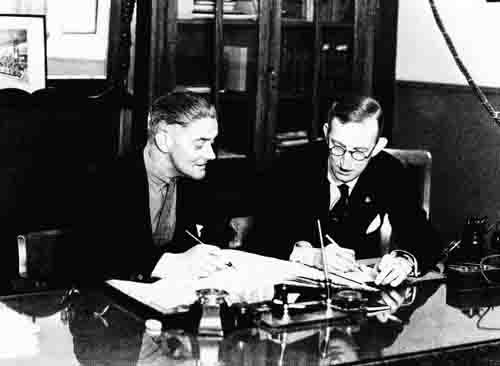
To empower him to make whatever changes were necessary, Nuffield made him managing director of Morris Motors Limited; a move that did not find universal acclaim amongst some of the other senior members of management. Nevertheless Lord soon warmed to his task, laying down new lines and updating plant and generally infusing the place with an air of increased efficiency. He also took charge of the introduction of a new model, the Morris Eight, to replace the Morris Minor. His first priority was to get rid of the OHC engine which he thought was far too complicated (even though he’d helped to put it into production when he was at Wolseley) and replace it with a new simple side valve unit that bore an uncanny resemblance to a similar sized motor from rivals, Ford.
Lord Nuffield’s accountants had been pressing him, mainly for tax reasons, to relinquish his personal ownership of the Wolseley, MG and SU Carburetter companies. With Lord’s backing these companies were sold to Morris Motors Limited, at which point he assumed responsibility for them. Wasting no time he organised a visit to Abingdon to see what efficiencies he could introduce there. Deciding that their volumes did not justify any major changes to the production lines he turned his attention elsewhere. The racing shop was the first to get his attention. “That can go for a start;’ he said (or words to that effect). Sharing Nuffield’s dislike of racing he also halted production of the R-type. Upon being shown the EX150 prototype chassis he told Kimber it was far too complex and halted all further work on it, at the same time closing the drawing office and transferring the majority of design staff to Cowley.
Kimber must have been utterly devastated but held his nerve. Fortunately Lord was persuaded that the new saloon car was vital for the company’s future prosperity and agreed that it would be re-engineered by the Cowley drawing office. Whilst the new car was given a very ordinary cross braced chassis frame with cart springs in the typically Morris idiom, it did thankfully retain the splendid coachbuilt body that Kimber had had designed for EX150 by Mulliners (of Birmingham). Kimber’s idea of a powerful 3.5 litre engine was quickly dismissed and in its place Cowley specified a 2062cc OHV unit from the Wolseley range. Remarkably however a fully fitted prototype had been built in time to be shown on the MG stand at the London Motor Show later that year. The MG folk were slightly dismayed to find their new model having to share the limelight with another brand-new sporting saloon – William Lyons’ 2.5 litre SS Jaguar. This dismay was compounded by the fact that it took almost another six months for Cowley to get production supplies of all the components before Abingdon could begin building the car. Nevertheless at £375 it was extremely good value and immediately became a best seller in its class, doing much to lift MG from the doldrums. Before the car went into production Cowley had enlarged the engine to 2288cc. Whilst this did little to match the performance of the Jaguar it was a step in the right direction and the best Kimber could hope for in the circumstances.
Kimber had also been faced with the question of what to do about the two-seater Midget. With Wolseley anxious to phase out the OHC engines they were supplying to Abingdon, a suitable alternative needed to be found. The best alternative seemed to be a new overhead valve engine that Wolseley were planning to use. Even after the Morris ‘coup’, Abingdon were still building the P and N-types with the overhead cam engines. Now as they moved into 1936 events began to overtake them. A decision had been made, probably by Cowley, to create a new two-seater sports car that would replace both. Larger than the P but smaller than the N it would be designed to utilise as many Morris group components as possible. It was at this juncture that fate took a hand. A Morris engineer by the name of Grimes had been assigned to this task and given the title of section leader MG. Jack Daniels and George Cooper who had been transferred from Abingdon to Cowley were recruited as his new staff. Once he had identified a selection of components for them to use, Grimes showed little further interest in the project. With Daniels taking charge of the chassis and Cooper looking after the body the two men drew pretty heavily on their MG experience. A ladder frame underslung at the rear, half elliptic springs with sliding trunnions, 19 inch wheels, external vertical petrol tank, all these things following well tried MG practice. Even the 7ft 10in wheelbase had already been tried and tested on the Q-type. The track too at 3ft 9in was the same as the Q (and also the N). The body was also modelled on its predecessor, with the extra chassis length giving the car a sleeker appearance than previous Midgets. The engine was of course an entirely different kettle of fish. This 1292cc unit when fitted with twin carburetters gave a respectable 52bhp at 5,000rpm, a marked improvement when compared to the PB. After the engine, probably the biggest difference to what had gone before was the fitting of a Lockheed hydraulic braking system. Whilst the normally conservative Nuffield had been fitting such brakes to his Morris range for some time, the usually progressive Kimber had preferred to stick with cable brakes on the basis that they gave more ‘feel: After a fairly small initial batch of cars had been built the T-type would also feature syncromesh on third and top gear. In fact the introductory brochure listed some 26 ‘improvements’ over its predecessor, all for the same price as a P-type (£220).
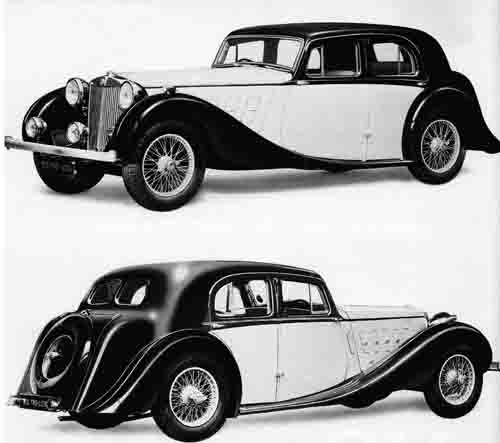
Just when things seemed to be settling down, rumours began to circulate regarding Leonard Lord’s possible departure. Rumour turned to fact when it was announced that he had resigned his position with the Morris Group. He had apparently demanded an increase in salary plus a share of the profits. Nuffield, who had always prided himself on rewarding his executives generously, was not prepared to meet these demands and the two men parted company. Lord was replaced by Oliver Boden, a safe pair of hands, originally from Wolseley, who had been looking after the Morris Commercial works in Birmingham. Boden was in turn replaced by one of Nuffield’s trusted young lieutenants, Miles Thomas.
Early in 1936 rumours had also begun circulating regarding the possibility of another new model from the Abingdon stable. In the event, this new car that we would come to know as the VA would not be unveiled until much later in the year, at the Olympia Motor Show. Smaller than the SA and fitted with a 1.5 litre four cylinder engine, it was meant to appeal to those who were looking for something a little more modest. Part of the reason that it had taken so long to get the car into production had been, much to Kimber’s frustration, the fact that the Government’s rearmament programme, partly designed to create employment, was making it extremely difficult to obtain the necessary material, particularly sheet steel.
Intended as a replacement for the Magnette, the new car was available as a saloon, a four-seater convertible or, in common with the other two new MGs, as a Tickford drophead coupe. The 1548cc ohv engine, of Wolseley extraction, gave the car a less than sparkling performance but at £280 for the tourer, going up to £335 for the Tickford, it offered pretty good value for money and would prove to be an important addition to the MG range.
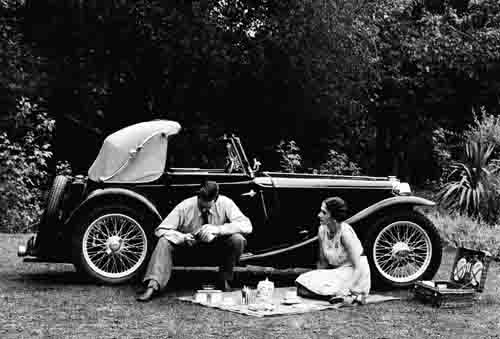
With the factory no longer involved in racing, Kimber managed to provide a small measure of support for a couple of MG trials teams without raising too many eyebrows. These were the ‘Musketeer’ and ‘Cream Cracker’ teams which enjoyed a good measure of success and provided Kim with plenty of ‘free’ advertising. Also, whilst George Eyston was away chasing world records, Goldie Gardner had assumed the mantle of record-breaker-in-chief for MG, using the ex-Horton offset single seater K3. This was no ordinary K3 (if there is indeed such a thing as an ordinary K3), as for instance the engine had been fitted with a bronze cylinder head similar to the one used by German racer, Bobby Kohlrauch on EX127. ln October 1937 Goldie had achieved a class G record of 148.8mph for the flying kilometre on the autobahn at Frankfurt with his 1100cc engine fitted with a Zoller supercharger. Gardner was not the only one there attempting to break records. The Auto Union Chief engineer, Eberan von Eberhorst was also present with his team. The German suggested to Goldie that he could probably squeeze more speed from the car if he fitted it with an all enveloping streamlined body. Gardner was keen to tryout this proposal and arranged to visit Lord Nuffield to seek his support for the project which would of course involve MG. Happily Nuffield gave the idea his blessing and plans were put in place.
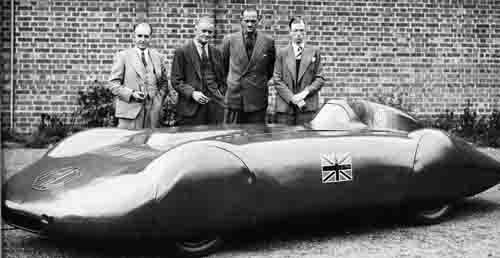
Rather than reinvent the wheel it was decided to try to obtain Eyston’s old EX135 which had been sold to Donald Letts, as this car already had the offset transmission that would be required. Fortunately Letts agreed to sell and work began immediately back at the factory. Reid Railton, who had designed the streamlined body for John Cobb’s land speed record car, was engaged to create the new shell, whilst the well proven team of ‘Jacko’ Jackson and Syd Enever, with assistance from Robin Jackson (no relation) from Brooklands, would concentrate on the engine which would be fitted with a Centric supercharger. The final result with its beautifully aerodynamic exterior belied the fact that beneath the surface lay a 1933 K3 chassis and engine which in terms of production were both well out of date!

On its first time out on the autobahn at Frankfurt in November 1938 Goldie achieved an astonishing 187.62mph over the flying mile. At the end of May 1939 he raised the class G record to an almost unbelievable 203.16mph at Dessau in Germany. This was the first time ever that an 1100cc car had come anywhere near the magic 200mph mark and Goldie’s performance left those who had witnessed it in a state of disbelief! The team’s crowning glory came two days later when, having bored the engine out in situ to 1105.5cc, Goldie also took the class F flying mile record at 203.85mph. Sadly the significance of these events would soon be overshadowed by the unfolding political situation in Europe over the coming weeks.
1939 would hold one further surprise – the announcement of yet another large saloon, the WA, probably the largest and most luxurious MG ever! This 2.6 litre car was very much in the mould of the SA. The engine was in fact a bored out SA unit giving an additional 20bhp. This was however largely cancelled out by an increase in weight of more than 3001bs.
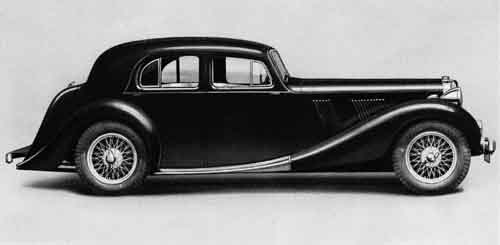
Something MG did not announce until September 1939 was that they had in fact changed the engine in the T-type to a modified version of the Morris M10 unit. Although this only increased the power by a couple of bhp it was in fact a better engine and would be the one that would eventually carry the company through the difficult post-war era.
With war clouds looming there was little that the MG Car Company and its loyal band of workers could do but brace themselves, in common with the rest of Britain, for whatever the future might hold.
To be continued …
Our thanks once again to Andy Knott, Editor Safety Fast, and author, Peter Neal, for their permission to reprint this article.

